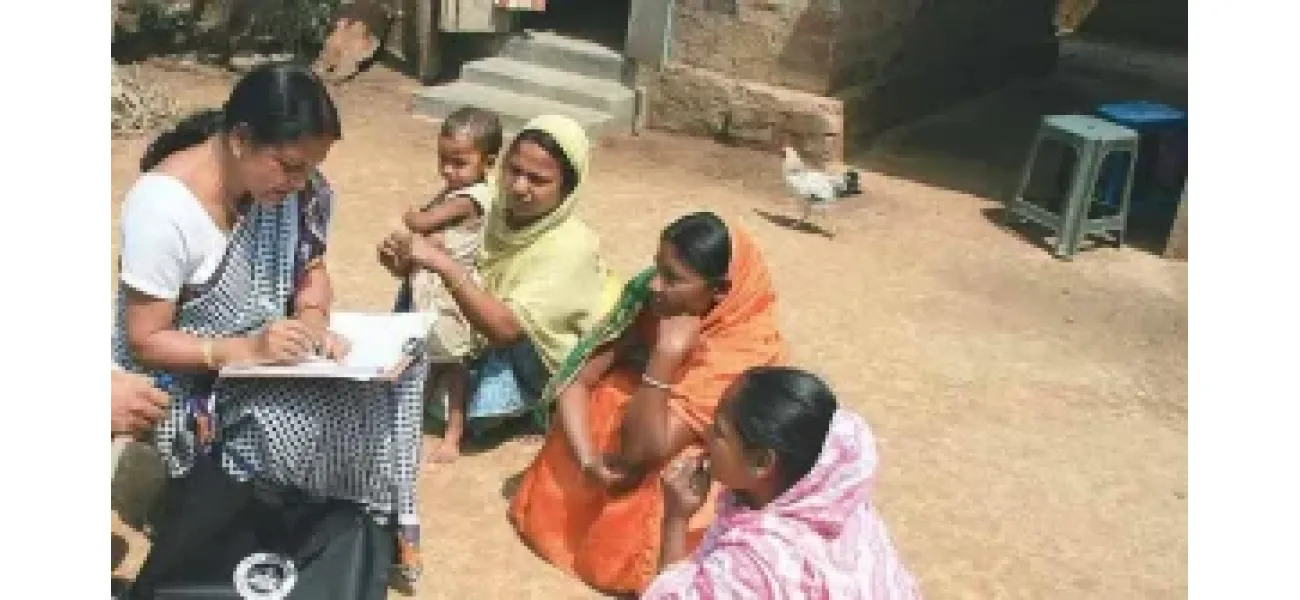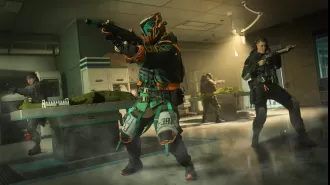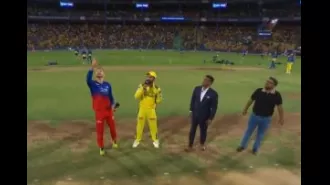A new version of the traditional Hindu water pot, known as the Mandal-Kamandal, has been released.
The recent decision by the CCPA, led by PM Narendra Modi, to include caste enumeration in the upcoming census marks a significant change in the BJP's political strategy.
May 5th 2025.

The recent decision made by the Cabinet Committee on Political Affairs, led by Prime Minister Narendra Modi, has caused quite a stir in the realm of politics. The decision was to include caste enumeration in the upcoming census, which marks a major shift in the BJP's political strategy. This move not only shows the saffron party's readiness to take over the main campaign platform of its rivals, namely the Congress, RJD, and SP, but also highlights its intention to incorporate it into its Hindootva politics.
This strategic move can be seen as a modern version of the Mandal-Kamandal politics that emerged in the past, which was a combination of the Dalit politics advocated by the Mandal Commission report and the Hindootva ideology propagated by the BJP. In 1979, the government under Morarji Desai formed a commission headed by Bindheshwari Prasad Mandal, then a Member of Parliament from Bihar, with the aim of identifying socially and educationally backward classes in India. The commission identified a total of 3,743 different castes and communities as backward based on certain criteria. These castes accounted for a significant 52% of the country's population. As a solution, the commission proposed a 27% reservation for these backward castes and classes in public employment, alongside the existing reservations for SCs and STs.
However, when VP Singh became the Prime Minister in 1989, he decided to implement the Mandal Commission's recommendations in order to garner the support of backward castes. This decision faced several bureaucratic hurdles and constant legal interventions, and it was finally implemented in 1993 during the tenure of the PV Narasimha Rao government. In response to this, the BJP launched its Kamandal politics to unite the Hindu population in its favor. This move managed to sway many fence sitters who were previously hesitant to support the party.
The irony of the current situation is that the BJP itself is now advocating for a caste census to gain political advantage, along with its core Hindootva agenda. With the upcoming Assembly election in Bihar, the state's caste composition provides the perfect opportunity to test the effectiveness of this new policy. The BJP's decision reflects its nervousness over the Opposition's efforts to consolidate its support base among backward castes, particularly the OBCs, by demanding a caste census. This can be inferred from the fact that during the 2024 Lok Sabha elections, the Prime Minister launched a scathing attack on the Congress' manifesto, which promised a caste census as a reflection of their "Urban Naxal" thinking. The BJP used this as a rallying cry, asking the people for a massive majority so that they could make changes to the Constitution. However, this tactic backfired as OBC and Dalit groups saw it as a threat to dismantle caste-based reservations, leading to a loss of votes for the BJP.
Although the party has regained some ground by winning elections in Maharashtra and Haryana, there is still uncertainty over whether their hard-line Hindootva approach will yield the desired results in the next Lok Sabha polls, especially given the growing demand for a caste census. Until recently, the Prime Minister had been stating that there were only four castes in the country - women, youth, farmers, and the poor - as a way to dismiss the Congress' demands for a caste census and a removal of the 50% cap on reservations for SC/STs and OBCs.
The government's decision follows its usual pattern of surprising the Opposition and catching them off guard. It is no surprise that the announcement has left the Opposition confused, as seen in Congress leader Rahul Gandhi's response of "Modiji used to say there are only four castes in the country. I don't know what caused the change of heart in the BJP." However, this decision seems to have been carefully thought out and is a huge gamble for the BJP, as they cannot afford to lose any more ground. The recent events in Pahalgam have dealt a major blow to their already fragile support system. Another hasty and ineffective move, similar to the Balakot "surgical strike," will not be enough to silence the vocal groups trying to push India into a war. The leaders in power understand that the Indian armed forces may not be willing to get involved in a prolonged war. We can see examples of ongoing conflicts in countries like Ukraine and Gaza, where the fighting has been going on for years with no end in sight. The Indian population and economy are not in a position to engage in a lengthy military operation, especially with the possibility of direct involvement from China. The announcement of a caste census has provided some relief and hopefully will shift the focus from war to politics, or even better, petty caste-based politics.
This strategic move can be seen as a modern version of the Mandal-Kamandal politics that emerged in the past, which was a combination of the Dalit politics advocated by the Mandal Commission report and the Hindootva ideology propagated by the BJP. In 1979, the government under Morarji Desai formed a commission headed by Bindheshwari Prasad Mandal, then a Member of Parliament from Bihar, with the aim of identifying socially and educationally backward classes in India. The commission identified a total of 3,743 different castes and communities as backward based on certain criteria. These castes accounted for a significant 52% of the country's population. As a solution, the commission proposed a 27% reservation for these backward castes and classes in public employment, alongside the existing reservations for SCs and STs.
However, when VP Singh became the Prime Minister in 1989, he decided to implement the Mandal Commission's recommendations in order to garner the support of backward castes. This decision faced several bureaucratic hurdles and constant legal interventions, and it was finally implemented in 1993 during the tenure of the PV Narasimha Rao government. In response to this, the BJP launched its Kamandal politics to unite the Hindu population in its favor. This move managed to sway many fence sitters who were previously hesitant to support the party.
The irony of the current situation is that the BJP itself is now advocating for a caste census to gain political advantage, along with its core Hindootva agenda. With the upcoming Assembly election in Bihar, the state's caste composition provides the perfect opportunity to test the effectiveness of this new policy. The BJP's decision reflects its nervousness over the Opposition's efforts to consolidate its support base among backward castes, particularly the OBCs, by demanding a caste census. This can be inferred from the fact that during the 2024 Lok Sabha elections, the Prime Minister launched a scathing attack on the Congress' manifesto, which promised a caste census as a reflection of their "Urban Naxal" thinking. The BJP used this as a rallying cry, asking the people for a massive majority so that they could make changes to the Constitution. However, this tactic backfired as OBC and Dalit groups saw it as a threat to dismantle caste-based reservations, leading to a loss of votes for the BJP.
Although the party has regained some ground by winning elections in Maharashtra and Haryana, there is still uncertainty over whether their hard-line Hindootva approach will yield the desired results in the next Lok Sabha polls, especially given the growing demand for a caste census. Until recently, the Prime Minister had been stating that there were only four castes in the country - women, youth, farmers, and the poor - as a way to dismiss the Congress' demands for a caste census and a removal of the 50% cap on reservations for SC/STs and OBCs.
The government's decision follows its usual pattern of surprising the Opposition and catching them off guard. It is no surprise that the announcement has left the Opposition confused, as seen in Congress leader Rahul Gandhi's response of "Modiji used to say there are only four castes in the country. I don't know what caused the change of heart in the BJP." However, this decision seems to have been carefully thought out and is a huge gamble for the BJP, as they cannot afford to lose any more ground. The recent events in Pahalgam have dealt a major blow to their already fragile support system. Another hasty and ineffective move, similar to the Balakot "surgical strike," will not be enough to silence the vocal groups trying to push India into a war. The leaders in power understand that the Indian armed forces may not be willing to get involved in a prolonged war. We can see examples of ongoing conflicts in countries like Ukraine and Gaza, where the fighting has been going on for years with no end in sight. The Indian population and economy are not in a position to engage in a lengthy military operation, especially with the possibility of direct involvement from China. The announcement of a caste census has provided some relief and hopefully will shift the focus from war to politics, or even better, petty caste-based politics.
[This article has been trending online recently and has been generated with AI. Your feed is customized.]
[Generative AI is experimental.]
0
0
Submit Comment





